Optical Transceiver
What is 1×9 Transceiver? The Definitive Guide (2023)
Updated on April 25, 2023
Table of Contents
- What is it?
- Application
- Current Status
- What types of 1×9 transceivers are there?
- Optcore 1×9 transceiver solution
- Final words
What is 1×9 transceiver?
A 1×9 transceiver, also called a 1×9 fiber optic transceiver, is an optical component with a transmitter and receiver in the 1×9 single in-line (pin) package. Its most distinctive feature is a row of nine protruding metal pins, which can be soldered to the host board.
Besides, its enough housing space supports multiple fiber connectors like SC, ST, FC, and pigtails. That is also one advantage when compared with other small form factor transceivers.
Generally speaking, a 1×9 optical transceiver consists of three essential elements:
- The two optical subassemblies (TOSA+ROSA or BOSA)
- An electrical subassembly
- The housing
The below picture shows its typical appearance.
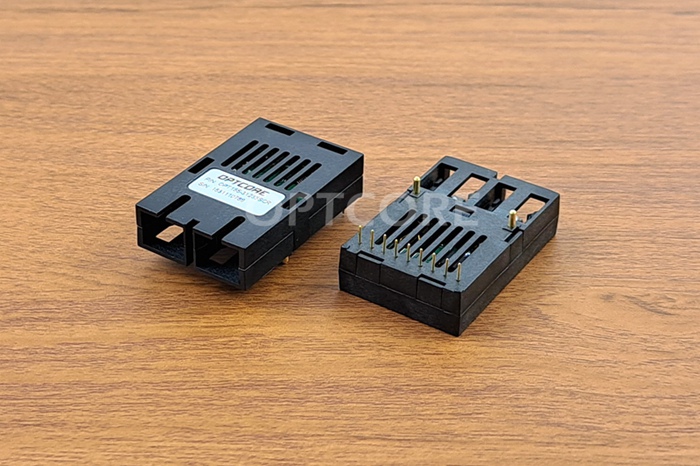
What is the 1×9 transceiver application?
In earlier dates, it was used widely in the datacom and telecom applications, including ATM, FDDI, SONET, SDH, and Ethernet. Typically equipment like ethernet switches, routers, network firewalls, NICs, fiber media converters, and video transceivers.
However, enhanced SFP and SFP+ transceivers have replaced most of them. We can see limited usage on the 1×9 transceiver—for example, industrial ethernet, industrial automation, industrial control, and other fiber-optic transmission systems that are vibration sensitive or request special fiber connectors.
Current Status
The 1×9 package was first released around the 1990s. It is the earliest optical module form factor and has played an important role in telecommunications and data communications. However, as the optical communication industry continues to evolve, more demands are being placed on optical modules regarding miniaturization, hot-plugging, intelligence, high speed, and low power consumption.
The traditional 1×9 package can no longer adapt to the actual demand and is gradually replaced by more advanced SFP, SFP+, and other packaging forms. Therefore, we can rarely see 1×9 optical modules in the market. There are very few suppliers offering these transceivers.
It is a traditional transceiver type mainly used for industrial communications, including media converters, optical mode converters, fiber-optic transmission systems, and other industrial Ethernet switches.
Further Reading
- SFP vs. 1×9 Transceiver Comparison: Picking the Right Transceiver for Your Network Platform
- Fiber Connector Types: A Complete Guide
Types of 1×9 Transceivers
Like other optical transceivers, 1×9 transceivers also can be divided into many types based on a different standards. Next, we will categorize them based on various criteria.
By Speed
- 100BASE 1×9: Usually stands for 100Mbps, 125Mbps, or 155Mbps speed, mainly used in fast Ethernet, FDDI, SDH/SONET & ATM.
- 622M 1×9: Special for SDH/SONET equipment. Only some manufacturers provide this type.
- 1000BASE 1×9: Also known as 1G or Gigabit. Currently, it is the most popular speed for 1×9 transceivers.
- 0.5Mbps 1×9: low-speed transceiver for industrial control
- 2Mbps 1×9: low-speed transceiver for industrial control
- 10Mbs 1×9: low-speed transceiver for industrial control
- 84Mbps 1×9: low-speed transceiver for industrial control
- 350Mbps 1×9: mainly used for video transceiver transmission
By Media Type
- Multimode Fiber (MMF): Supports OM1, OM2, OM3, OM4, and OM5 cabling. A higher fiber grade provides better performance.
- Singlemode Fiber (SMF): It offers the maximum link distance and is appropriate for 9/125 single mode fiber cabling.
By Transmission Distance
- SX: Stands for short reach. It is defined in the IEEE 802.3z; 1000base-SX reaches 550m on multimode fiber.
- LX: Stands for extended reach. It is defined in the IEEE 802.3z, 1000BASE-LX reaches 10km on single mode fiber.
- EX: Stands for extended reach. It is defined in IEEE 802.3z. 1000BASE-EX reaches 40km on single mode fiber.
- ZX: Also Stands for extended reach. It is defined in IEEE 802.3z, 1000BASE-ZX reaches 70km (or 80km) on single mode fiber.
- FX: Also Stands for extended reach. It is defined in IEEE 802.3z, 1000BASE-ZX reaches 70km (or 80km) on single mode fiber.
- 100BASE-FX: Usually refers to Fast Ethernet over fiber. Available in single-mode or multimode fiber, suitable for high-speed backbone networks and long-distance transmission.
By Application
- Regular 1×9: most commonly optical transceiver with a duplex fiber
- CWDM 1×9: support CWDM wavelength to improve the bandwidth
- DWDM 1×9: support DWDM wavelength to maximize the bandwidth
- BiDi 1×9: Bi-directional transceiver for transmit and receiver in single strand fiber
- Single transmitter: only consists of the optical transmitter for one-way transmission
- Single receiver: only consists of the optical receiver for one-way transmission
By Connector Type
- SC Transceiver: SC is the most common connector for them
- ST Transceiver: assembly with ST connector, mainly for industrial application
- FC Transceiver: assembly with FC connector
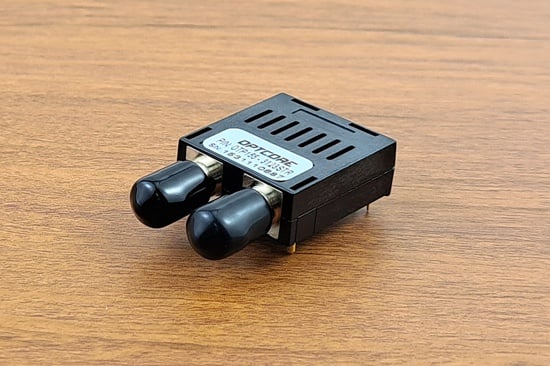
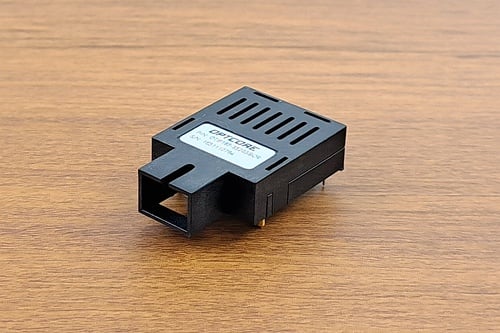
By Operating Temperature
- Commercial grade: It’s the typical transceiver that supports 0~70C temperature. Usually, with the best pricing and cost ratio, and suitable for a standard indoor environment like a data center or enterprise.
- Industrial grade: It’s a hardened transceiver that supports -40~85C temperature. Suitable for industrial switches in the outdoor environment. But they are offered at a much higher price.
The above types are the main 1×9 category. Consider more than one classification factor when you evaluate a new transceiver. Try to combine the various classification criteria and finally choose the right one.
Optcore 1×9 transceiver solution
As a total optical transceiver supplier, Optcore still offers 1×9 transceivers at high quality and competitive pricing. They come with different fiber connectors, speed classes, and operating temperatures for most applications. We will be your trustable partner on the optical transceiver.
-
 2Mbps TTL 1490nm or 1550nm 100km BiDi 1×9 TransceiverUS$ 46.00 (Excl. VAT)
2Mbps TTL 1490nm or 1550nm 100km BiDi 1×9 TransceiverUS$ 46.00 (Excl. VAT) -
 2Mbps 1310nm or 1550nm 60km BiDi 1×9 TTL TransceiverUS$ 24.00 (Excl. VAT)
2Mbps 1310nm or 1550nm 60km BiDi 1×9 TTL TransceiverUS$ 24.00 (Excl. VAT) -
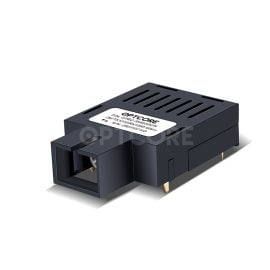 2Mbps TTL 1310nm or 1550nm 40km BiDi 1×9 TransceiverUS$ 20.00 (Excl. VAT)
2Mbps TTL 1310nm or 1550nm 40km BiDi 1×9 TransceiverUS$ 20.00 (Excl. VAT) -
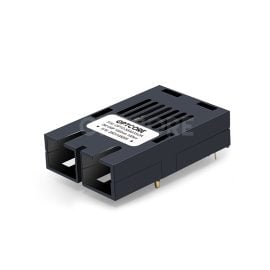 2Mbps TTL 1550nm 100km 1×9 TransceiverUS$ 53.00 (Excl. VAT)
2Mbps TTL 1550nm 100km 1×9 TransceiverUS$ 53.00 (Excl. VAT) -
 2Mbps TTL 1310nm 60km 1×9 TransceiverUS$ 23.00 (Excl. VAT)
2Mbps TTL 1310nm 60km 1×9 TransceiverUS$ 23.00 (Excl. VAT) -
 2Mbps TTL 1310nm 40km 1×9 TransceiverUS$ 20.00 (Excl. VAT)
2Mbps TTL 1310nm 40km 1×9 TransceiverUS$ 20.00 (Excl. VAT)
Final thoughts
That’s all about the 1×9 optical transceiver. I hope this guide helps you gain critical knowledge about it. Now let us have a simple test.
Can you tell the difference between 1×9 and SFP?
Does it support the DDM function?
Have you seen them on any of the networking devices?
Let me know by leaving a comment.
Read more:
- What is SFP+ module
- What is SFP module
- What is GBIC? Everything You Need to Know
- When Should I Buy a New Fiber Media Converter?






